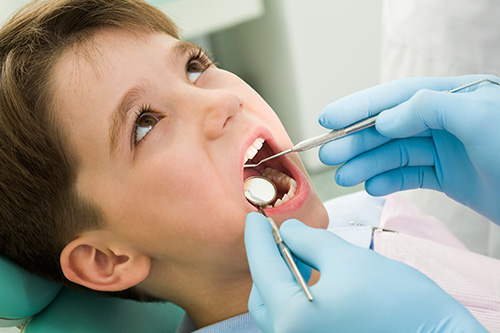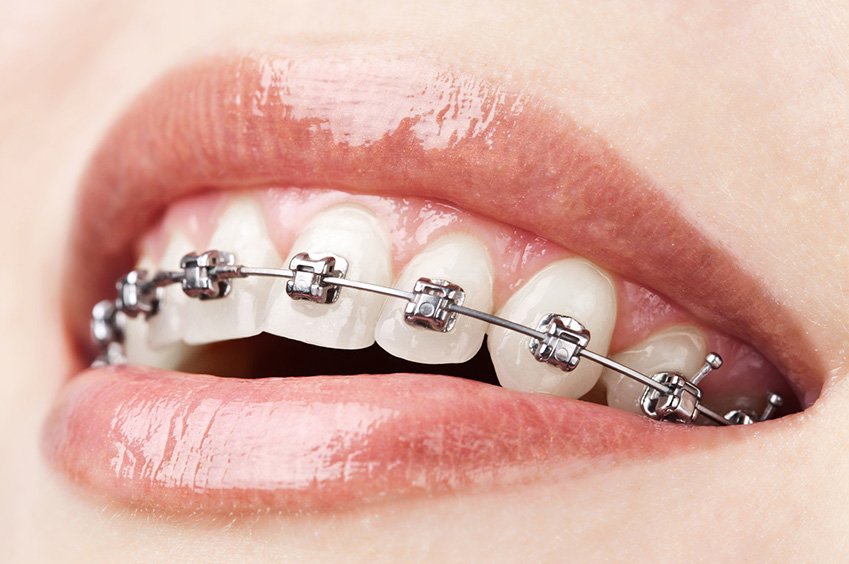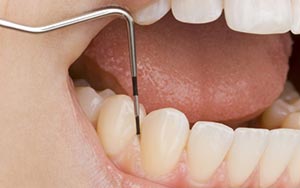Orthodontics
Malocclusion (poor bite) is usually caused by problems in the shape or size of the jaw or teeth. If children have a small jaw, their teeth may grow into a space that is too small. Under these crowded conditions, teeth will push each other out of proper position. Other causes include thumb-sucking, pacifier use, and tooth loss.
Genetic factors
People can inherit mismatched traits such as jaw size and tooth size. This can produce large, crowded teeth in a small jaw or small teeth that drift out of place in a larger jaw. In other cases, a person may inherit a trait that results in missing teeth or teeth that erupt in one another’s place (transposed teeth). More rarely, people are born with conditions (congenital) that can create malocclusion problems, such as a cleft palate or a severely underdeveloped upper or lower jaw.
TOOTH LOSS
Tooth loss may cause drifting of bordering teeth into the empty space, creating a poor bite. Common causes of tooth loss are:
- Trauma, such as sports injuries and automobile and falling accidents.
- Tooth decay that leads to having a tooth pulled (extracted) by a dentist. Poor dental hygiene promotes tooth decay, as does a child sucking on a bottle during sleep. The sugars in milk, juice, and formula can cause damage to teeth.
MALOCCLUSION TREATMENT OVERVIEW
Orthodontic treatment uses appliances, tooth removal, or surgery to fix the way teeth and jaws are aligned. There are many ways to treat poor bite (malocclusion). Expert opinions differ about when to start treatment. Your dentist or orthodontist may give you a choice between early or later treatment or may prefer one specific approach. The general categories of orthodontic devices (appliances) are functional and fixed. Functional appliances use the muscle action from speaking, eating, and swallowing to create forces that move teeth and align the jaws.
- Some functional appliances are removable, while others are bonded to the teeth
- A functional appliance may fit between the upper and lower teeth (a splint) or may span across the mouth between the molars, pressing the bone outward
Fixed orthodontic appliances are sets of wires and brackets cemented to the teeth. These are commonly called braces Over a period of about 24 to 28 months, the wires are tightened and adjusted, gradually applying enough force to move the teeth (bone remodeling). Retainers are removable appliances made of molded plastic and wire. They hold the teeth in place after braces are taken off. If the teeth start to move back out of position, the orthodontist may bond a short retaining wire to the back of some teeth. This wire will hold the teeth in place.
ADULT TREATMENT
Orthodontic treatment for malocclusion is a popular option for adults, due in part to better technology. In the past, wide silver bands held braces in place. Today they are less obvious. Instead of the wide bands, a small metal or ceramic fastener is bonded to each tooth, and a narrow wire passes through the fasteners. New options include:
- Clear plastic instead of silver wires.
- Lingual braces. These braces attach to the back of the front teeth.
- Removable clear plastic aligners (Invisalign). These are molded specifically for you.
Lingual braces and aligners don’t work for everyone. They aren’t options for children. Your orthodontist can tell you the best choices for your situation. Orthodontic treatment for adults may also involve:
- Removal (extraction) of teeth to create more space.
- Orthognathic surgery of the jaw.
- A retainer, after braces are removed.
- Adjustments, such as grinding of high tips of teeth, to prevent continued or increased malocclusion for adults.
Most adults have little or no jaw growth. This means that surgery is the only way to correct jaw-related bite problems. Some adults may benefit from simply camouflaging, or hiding, a jaw-related problem. Using braces, the orthodontist can move the teeth so that they fit together, despite the jaw discrepancy. But surgery is the best way to treat more severe jaw problems.
ORAL HABITS
Oral habits that place ongoing or frequent pressure on the teeth may slowly move the teeth out of place. The most common oral habits that cause malocclusion include:
- Thumb- or finger-sucking and pacifier use for more than 4 to 6 hours within a 24-hour period.
- Mouth breathing (possibly). Infants and children may breathe through their mouths because of a partially blocked airway.
MALOCCLUSION SYMPTOMS
The most obvious sign of malocclusion is crooked or protruding teeth. Physical symptoms of malocclusion are uncommon but can range from mild to severe. Have your general or pediatric dentist evaluate whether a poor bite is causing:
- Problems chewing food
- Problems with biting the cheek or roof of the mouth
- Slurring speech, trouble saying certain words, or other speech problems
- Pain in the facial muscles or jaw
- Permanent teeth coming in (erupting) at the wrong position.
Adult malocclusion symptoms will typically remain the same or get worse over the years. Symptoms in a child who has mild malocclusion may improve over time. Through the teen years, the jaw grows dramatically. This growth period may correct mild crowding of teeth or teeth shifting as a result of thumb-sucking.
CHILD AND TEEN TREATMENT
The aim of treatment in the childhood and teen years is to move permanent teeth into place. The orthodontist will time the treatments to match your child’s natural growth spurts. Treatment for crowding, the most common malocclusion problem, may mean removing (extracting) some permanent teeth. But orthodontists avoid removing permanent teeth when they can. The malocclusion treatments for children and adolescents are:
- Extraction (serial removal). Removing some baby teeth may ease severe crowding.
- Growth modification. This involves wearing fixed or functional appliances during the day and night to move the jaw into a better position.
- Fixed appliances (braces) gradually move the teeth. For children and teens, this treatment phase usually lasts about 24 months; for adults, about 28 months.
- Retainers. Retainers hold the teeth in place after orthodontic treatment. Some orthodontists recommend that retainers be worn for many years, because teeth have a natural tendency to drift out of place.
- Space maintainers, made of metal or plastic. Spacers keep the surrounding teeth from moving (drifting) into open spaces created when teeth are pulled or lost in an accident.
WHAT TO THINK ABOUT
Some cases of malocclusion clearly require orthodontic treatment to straighten teeth. In many cases, though, the decision is a matter of personal choice. Besides looking nice, straight teeth can improve how you bite, chew, and speak. They are also less prone to decay, gum disease, and injury. The timing of treatment is ultimately up to you and your child or teen. Talk with your orthodontist about the pros and cons of treatment options. Orthodontic treatment isn’t an exact science. The average treatment time is about 2 years, but it can take longer than planned. Usually, adult treatment takes longer than a child’s treatment. The treatment time can vary, so ask your dentist how long it may last for you. After treatment ends, teeth often begin to shift. Molded plastic retainers, usually worn at night, help prevent this tooth movement. You may need a retainer for an indefinite amount of time. Orthodontic treatment doesn’t pose risks to adults who have healthy teeth and gums. But adults who have gum (periodontal) disease must first get treatment from a periodontist to avoid possible gum damage or tooth loss. Our Orthodontist brings along more than 15 years of expertise to this science of orthodontics treating various types of malocclusions from child to adult., you are welcome to book appointments for his consult.



